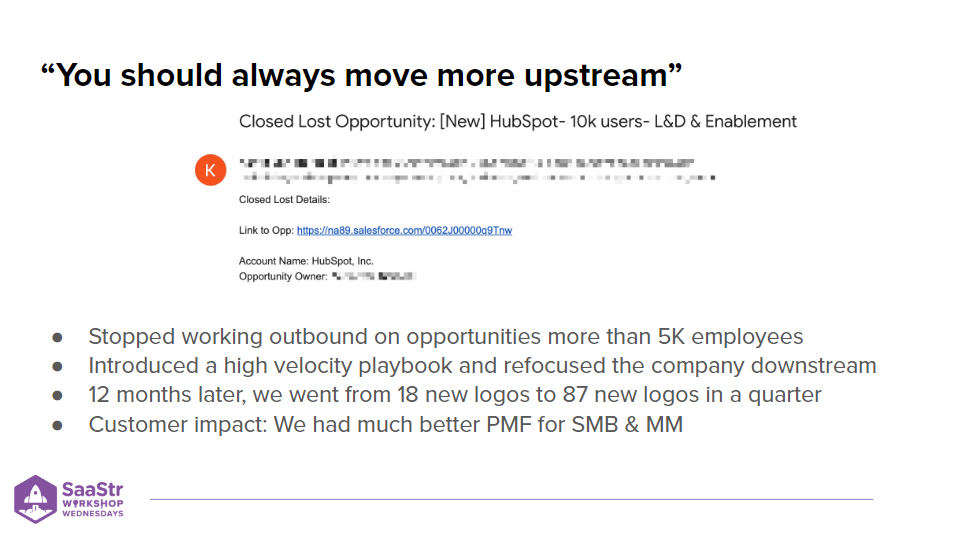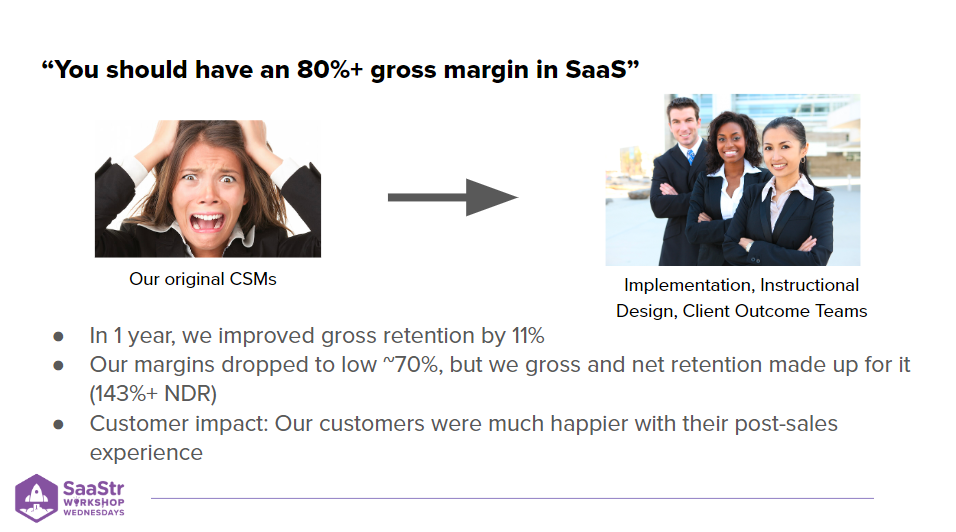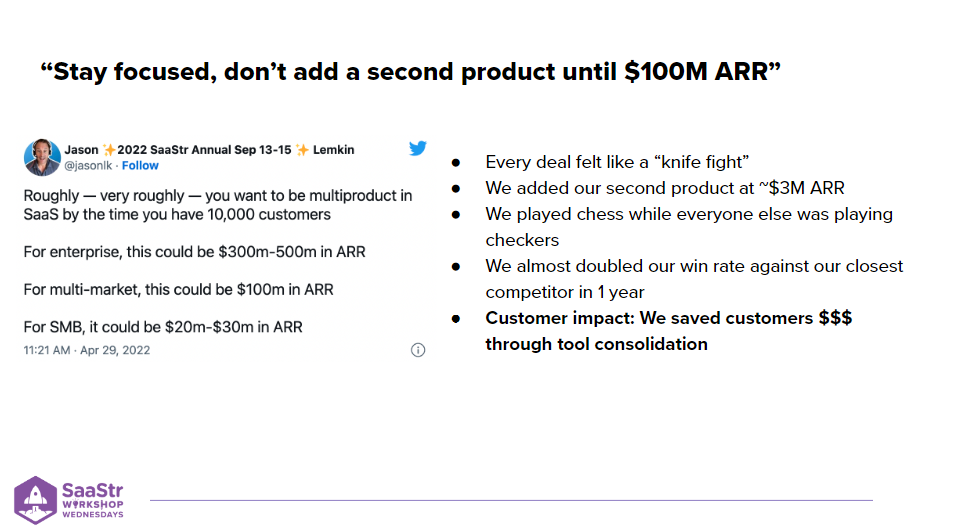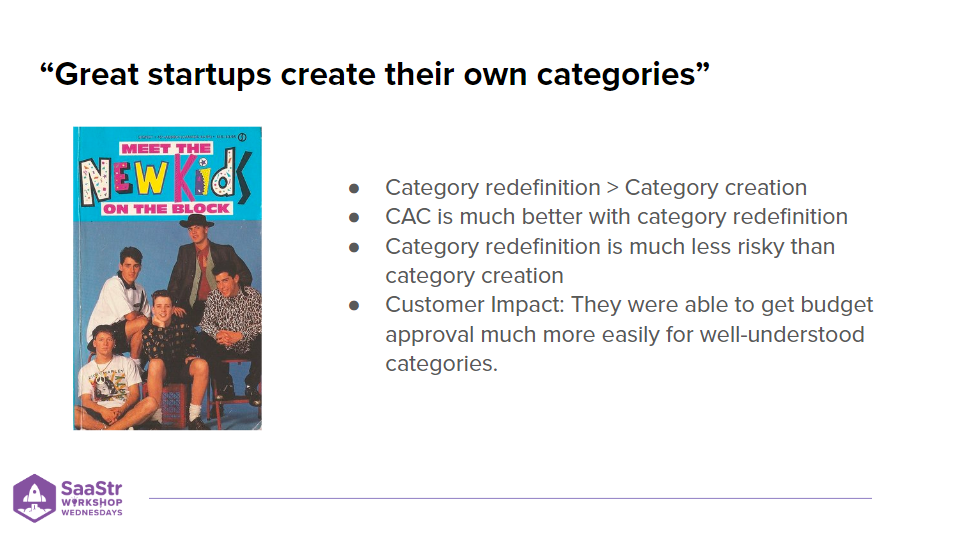Scaling a tech startup doesn’t come easy, and when you’ve tried all the conventional SaaS advice, it might be tempting to give up. But sometimes, the road less traveled is the path to success.
In an eye-opening workshop, WorkRamp CEO Ted Blosser shares how to overcome setbacks, trust your customers, and defy traditional wisdom to carve out a path to growth.
SaaStr Workshop Wednesdays are LIVE every Wednesday. Sign up for free.
The Long and Winding Road to $10M ARR
WorkRamp is an LMS (learning management system) company founded in 2015. It has now secured over $67M in funding and offers a robust platform for mid-market and SMB segments. But before the years of rapid scaling, it took the company a little while to hit its stride.
Blosser describes three long, painful years before hitting the first $1M ARR. WorkRamp was plagued with a series of hurdles during these early years, including:
- Rejections from investors.
- A mass exodus of engineers limited new deployments.
- Blosser’s sudden hospitalization before Y Combinator (he’s okay now!).
All these events underlined how precarious the situation was at the moment. But the drive and passion remained, and leadership didn’t give up. Blosser comments, “The big thing I want to share with everyone is just stick with it if you feel like you have product-market fit. Sometimes it can take longer.”
The good news is things finally turned around. After the company hit $1M ARR, they began to see a healthy, upward trend. In 2019, WorkRamp had its first $1M year, then in 2021, its first $1M quarter, followed by the $1M month shortly after. The milestones began piling up, and WorkRamp’s momentum increased.
What Did WorkRamp Do Differently to Scale?
To finally break out of slow progress, WorkRamp had to change its strategy. And they mostly did this by ignoring four pieces of traditional startup advice. Blosser explains, “If you think about WorkRamp and traditional startup advice, we ignored that. And you know what we did was say, ‘You know what? Let’s focus on what the market is telling us; let’s focus on what customers are telling us.’”
- “You Should Always Move More Upstream”
The bigger the SaaS client, the better, right? Well, not all the time. WorkRamp shifted its focus to a different segment –– the mid-market and SMB side. “What we did during this time between $1M and $10M is we actually started working more downstream, so it’s counterintuitive. Because when we looked at our data, we saw that we had much more success sub 5,000 employees,” Blosser says.
After the shift, the sales reps stopped chasing whales and working outbound ops with more than 5K employees. Leadership introduced a high-velocity playbook and refocused the company downstream. Twelve months later, WorkRamp went from 18 new logos per quarter to 87 new logos in a quarter. A few enterprise clients continued to come in through inbound, but the company carved out a winning market segment with the under 5K employee focus.
Customer Impact: A much better PMF for SMB & Mid-Market customers.

- “You Should Have an 80%+ Gross Margin in SaaS.”
An 80%+ gross margin is a worthy goal, especially if a company has gone public. But if you’re earlier in the startup journey, it’s okay not to reach that goal immediately.
WorkRamp invested a lot in its customer success team, contributing to the gross margin. They went from having a superstar “does-it-all” success department to breaking it out into units with specific functions:
- Implementation
- Instructional Design
- Client Outcomes
So, the cost for customer success tripled upfront, but the investment proved worth it down the line. In one year, WorkRamp improved gross retention by 11%. Margins dropped to a low ~70%, but gross and net retention made up for it –– the resulting NDR was over 143%.
Customer Impact: Customers are much happier with their post-sales experience.

- “Stay Focused, Don’t Add a Second Product Until $100M ARR.”
The conventional wisdom seems to make sense: Don’t overextend yourself or bit off more than you can chew by adding a second product too early. But WorkRamp made the unusual decision to introduce their second product at $3M ARR. Blosser explains the reasoning this way, “We added our second product at about $3M ARR, and I’ll tell you why we did this: We’re in this category where you have internal learning, that’s training your employees, and you have external learning, that’s training your customers and partners. And our second product was training customers and partners…when we introduced the second product, it really changed the whole game. It felt like we were playing chess while everyone else was playing checkers.”
After focusing downstream, WorkRamp was still fighting toe-to-toe with a similar LMS competitor. Every deal was a significant struggle. But by combining both internal and external learning, the company was able to differentiate itself and nearly double its win rate in a year.
Customer Impact: WorkRamp customers saved money through tool consolidation.

- “Great Startups Create Their Own Categories.”
It’s undoubtedly true that creating a new category can propel a company to success. But category creation demands time, resources, relationships, and funding that not every company has at its disposal.
Blosser believes that category redefinition can be a wiser choice than category creation. For example, category redefinition delivers a much lower CAC and reduces risk. By offering multiple training and learning products in one, WorkRamp redefined the LMS category and reaped the rewards.
Customer Impact: They were able to get budget approval much more easily for well-understood categories.

Key Takeaways
- You won’t necessarily have speedy and smooth sailing –– if your product-market fit is there, then you can succeed if you’re flexible and adjust your strategy.
- When in doubt, listen to what customers and the market is telling you rather than traditional advice.
- Category redefinition can be more realistic and successful than category creation.

